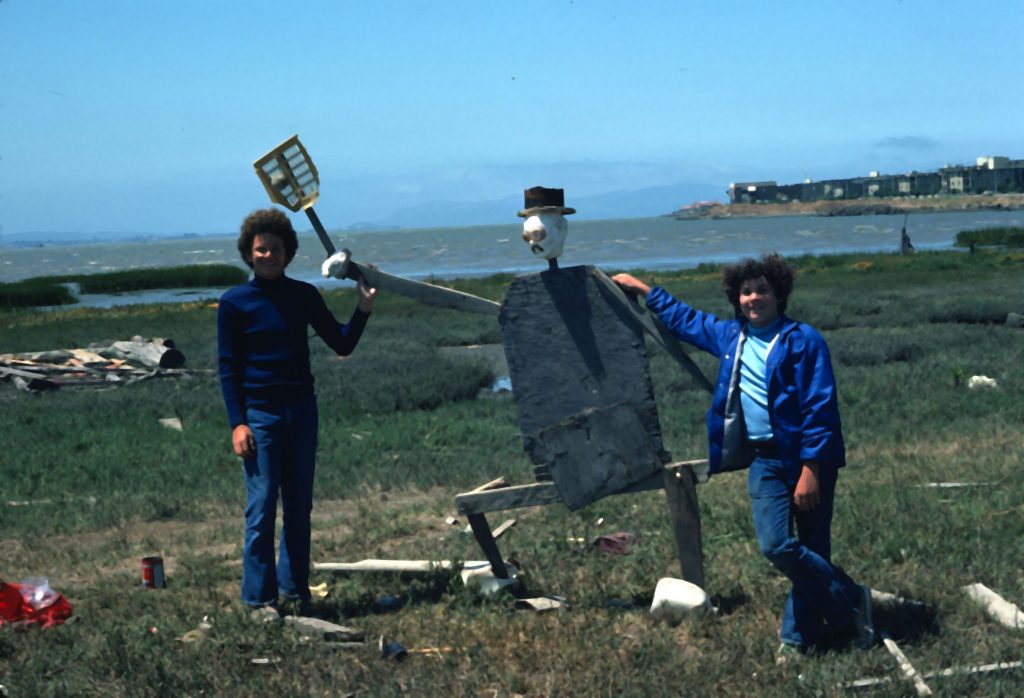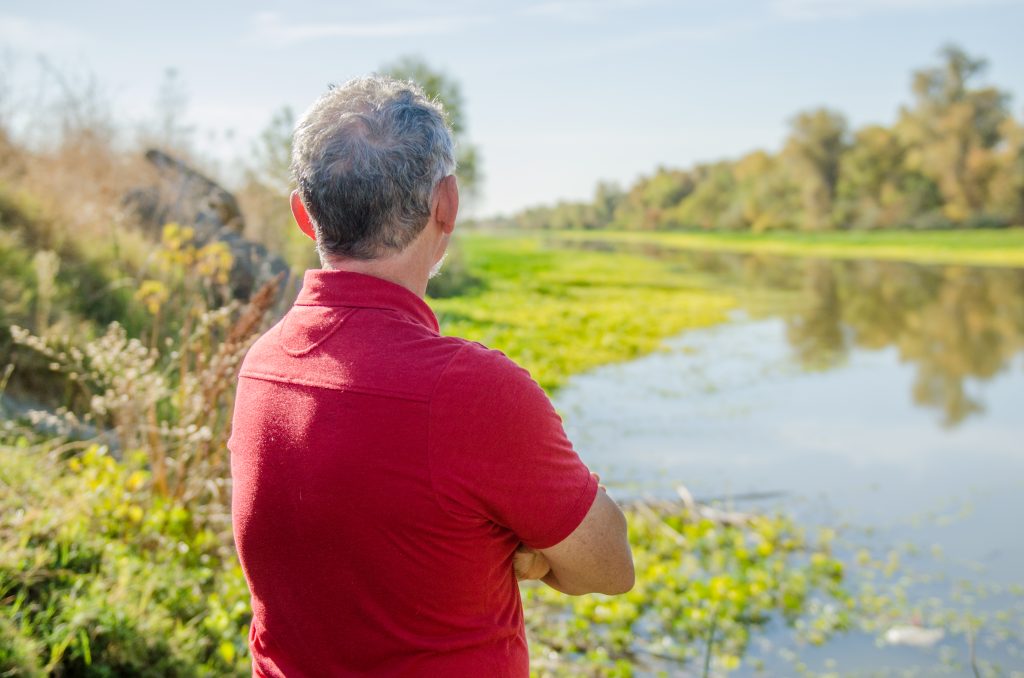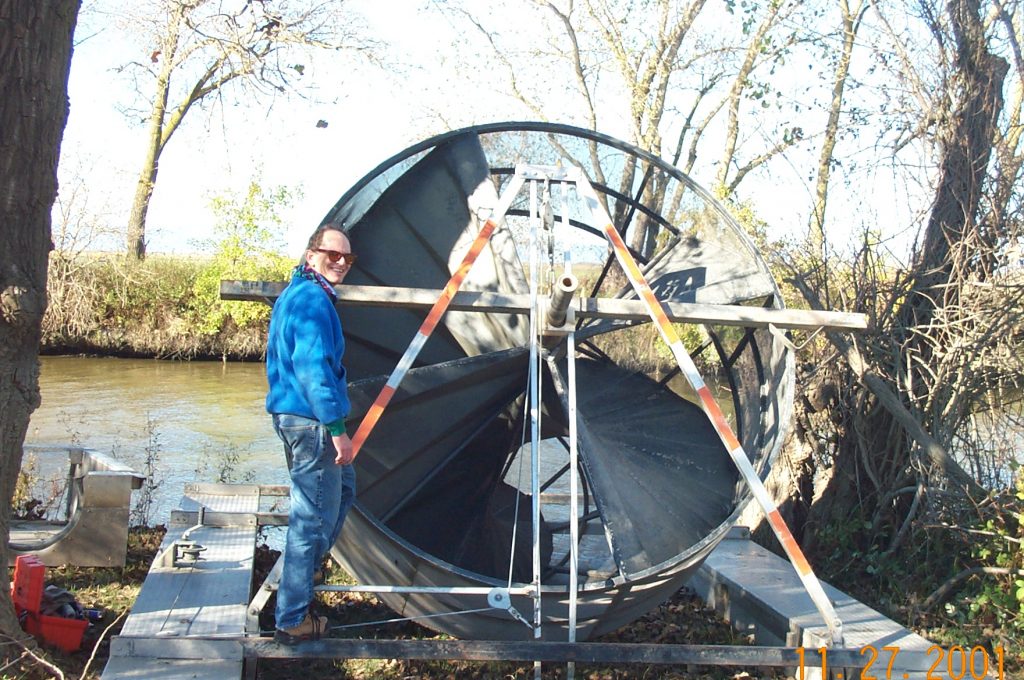Since as early as he can remember, Ted had always been drawn to the ocean. As a boy, he idolized Jacque Cousteau. A desire to understand the mighty sea burned within him through childhood, adolescence and on to his first year of college, where he would find himself at the docks of his maiden voyage out to sea.
“Marine biology was all I ever wanted to do, and this was going to be the first of many voyages out to the Pacific Ocean…” Ted recalls, “…or so I thought.” Just as the vessel cleared the channel, a relentless volley of waves, twenty feet tall began to batter the ship, twisting and tossing the craft into directions that baffled even the young scientists.

Ted and many of his fellow classmates were now doing everything they could to keep their lunch. As Ted’s knuckles turned white from grasping the railing, he began to re-evaluate his aquatic dreams. “I wanted to work on projects that mattered, but I realized on that day that the ocean wasn’t my destination.”
At that time, Farmers in the state of Louisiana had been perfecting what was known as rice- crawfish double cropping; a form of aquaculture devised to produce food for humans, independent of supply from earth’s oceans. “As I was driving around the valley, I was seeing all of these rice fields and I thought to myself ‘we could do more here’…we could use these fields for several purposes,” said Sommer.
Clean air advocates had been fighting to ban what was once a common practice of burning rice fields in preparation for the next year’s planting season. Ted proposed a multi-pronged solution; by flooding the fields rather than burning them, farmers could clear the crop remains, cut back on smoke pollution, and simultaneously improve aquatic animal habitats.
Ted’s solution proved spot on – burning was eventually banned and over time, flooded rice fields became a refuge for shorebirds, ducks and geese. In the decades since, Bird populations have soared.

“One of my roles is to try and to figure how the system works and how to make it better.” says Sommer, who now serves as the lead scientist at the California Department of Water Resources.
While bird populations thrived, Ted and his colleagues faced another wildlife crisis as several native fish populations began disappearing from the rivers. When they discovered that these fish populations surged during wetter years, Ted and his team set out to discover why. They studied the Yolo Bypass, a floodplain near Sacramento that also serves as a wetland habitat. Six years later, they reached an illuminating diagnosis – small insects and plankton are most plentiful in shallow waters. A healthy population of these tiny invertebrates offers a vital source of nutrition for young, developing salmon. With more food available, the young fish grow larger and more agile, more able to ward off predators and more likely to succeed in their voyage out to sea.
“The flooding of Yolo Bypass was first thought by many to be a death trap for young fish. We uncovered that the floodplain served as a massive nursery and food bank, we just needed to create access. If we can prolong the time that fish remain on the floodplains, we will dramatically increase their chances of reaching the sea.”

With support from the Department of Water Resources, Ted has teamed up with Sacramento Valley farmers, reclamation districts, agencies, and universities to create projects that allow for more direct flows into the Yolo Bypass. If successful, this coalition of farmers can replicate rainy seasons even in times of drought. By managing direct water flows to the Yolo Bypass through the Colusa drain and the Wallace Weir, more food can be delivered to the fish.
“We have 20 years of data that shows when there’s food and habitat, the fish thrive. Even in dry years, managed flooding can have a big influence on our ability to save these endangered species.”
While the outlook for fish populations may appear grim, Ted finds himself hopeful, borrowing a quote from Jacques Cousteau – “If we were logical, the future would be bleak, indeed. But we are more than logical. We are human beings, and we have faith, and we have hope, and we can work.”
Ted Sommer now serves in one of the most important positions a scientist can serve in the state of California – and he may just be one of the most influential people helping native fish today. It could be argued that Ted may have had a similar impact on the ocean if it hadn’t sent him back to shore, battered and queasy, but one thing is for sure – California’s endangered fish will be happy it did.



